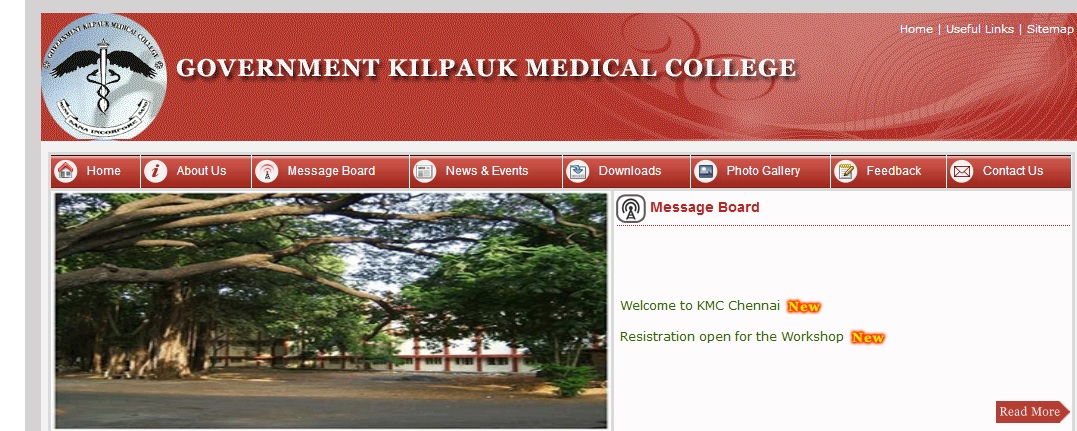Tropical Medicine MD Question Bank : gkmc.in
Name of the University : Government Kilpauk Medical College
Degree : Post Graduate (M.D)
Subject Code/Name : 2002/Tropical Medicine
Paper : III
Document Type : Question Bank
Website : http://www.kmc.ac.in/kmc/index.jsp
Download Model/Sample Question Paper :
2001-2004 : https://www.pdfquestion.in/uploads/gkmc.in/4138-1-67998.pdf
2005-2008 : https://www.pdfquestion.in/uploads/gkmc.in/4138-2-67999.pdf
2009-2010 : https://www.pdfquestion.in/uploads/gkmc.in/4138-3-68001.pdf
Upto 2000 : https://www.pdfquestion.in/uploads/gkmc.in/4138-4-67997.pdf
KMC Tropical Medicine Question Bank
March 2009 :
Sub. Code: 2002
M.D. DEGREE EXAMINATIONS
Related / Similar Question Paper :
Pathology Question Bank Pdf
Branch I – GENERAL MEDICINE
Part II / Paper II – (Candidates admitted upto 2003-2004) and
Paper III (for candidates admitted from 2004-2005 to 2007-2008)
TROPICAL MEDICINE
Q.P. Code : 202002
Time : Three hours
Maximum : 100 marks
Draw suitable diagram wherever necessary. :
Answer ALL questions. :
I. Essay questions : (2 x 20 = 40)
1. Discuss the epidemiology, pathogenesis clinical manigestations and management of falciparum malaria.
2. Discuss the aetiology, clinical features diagnosis and management of lymphatic filariasis.

II. Write short notes on : (10 x 6 = 60)
1. Visceral leishmaniasis.
2. Tropical pulmonary Eosinophilia.
3. Meliodosis.
4. Tropical pyomyositis.
5. L eptospirosis.
6. Chikungunya Fever.
7. Pellagra.
8. Herpes Zoster infection.
9. Heat hyperpyrexia.
10. Hook worm.
September 2009
I. Essay questions : (2 x 20 = 40)
1. Discuss the epidemiology, pathogenesis, clinical features, complications and management of Malaria.
2. Describe the etiology, clinical features, diagnosis and management of primary diastolic dysfunction of the heart.
II. Write short notes on : (10 x 6 = 60)
1. Balantidiasis
2. Aspergillosis
3. Anthrax
4. Hepatitis “c”
5. Hook worm
6. Iron deficiency anemia
7. Mumps
8. Polymyositis
9. Guinea worm
10. Japanese “B” encephalitis
March 2010
Paper III – (for candidates admitted from 2004-2005 to 2007-2008) and
Part II – Paper II (for candidates admitted from 2008-2009 onwards)
I. Essay questions : (2 x 20 = 40)
1. Discuss multi drug resistant tuberculosis.
2. Discuss about the neurological diseases occuring in HIV infection.
II. Write short notes on : (10 x 6 = 60)
1. Active and passive immunisation in rabies.
2. Visceral leishmaniasis.
3. Lymphogranuloma venereum.
4. Superficial mycoses.
5. KURU.
6. Heat stroke.
7. Thiamine deficiency.
8. Scorpion sting.
9. Amoebic liver abscess.
10. Cysticercosis.
Mycology & Applied Microbiology & Recent Advances
Branch IV : MICROBIOLOGY
(Common to all candidates)
Paper IV : MYCOLOGY AND APPLIED MICROBIOLOGY AND RECENT ADVANCES
Q.P. Code : 202017
Time : Three hours
Maximum : 100 marks
Draw suitable diagram wherever necessary :
Answer ALL questions :
I. Essay questions : (2 x 20 = 40)
1. Define quality assurance. Discuss in detail quality control programmes for clinical microbiology laboratory.
2. Discuss antifungal susceptibility testing methods for candida species with their merits and demerits.
II. Write short notes on : (10 x 6 = 60)
1. Mycetoma.
2. DNA microarrays and its application.
3. Disc approximation ‘D’ test for staphylococci.
4. Histoplasmosis.
5. Fungal stains.
6. Surface mycoses.
7. Flow cytometry.
8. Immuno chromatography.
9. Amp ‘C’ – ß lactamases in GNB.
10. Penicillium marneffi infection.
September 2009 :
I. Essay questions : (2 x 20 = 40)
1. Discuss the recombinant genetic engineering techniques and its applications.
2. National Aids control organization policy of diagnosis of HIV infection. Add a note on HIV vaccines.
II. Write short notes on : (10 x 6 = 60)
1. Gene cloning
2. Biological weapons
3. Typing methods in bacteria
4. Non gonococcal urethritis
5. Salmonella food poisoning
6. ESBL detection in the laboratory
7. Newer fluroquinolones
8. Revised national tuberculosis control programme
9. Bacteriology of milk
10. Cytokines
March 2010 :
I. Essay questions : (2 x 20 = 40)
1. Discuss important cytokines and their selected biologic effects.
2. Laboratory aids in the selection of antimicrobial therapy.
II. Write short notes on : (10 x 6 = 60)
1. Prions.
2. B.O.D. incubator.
3. Superficial mycoses.
4. Exospore.
5. Fc Farland tubes.
6. Jumping genes.
7. Opportunistic parasitic infections in AIDS.
8. Antiviral vaccines for HIV/AIDS.
9. Bioterrorism.
10. Biomedical waste disposal
Applied Basic Sciences in Dermatology Venereology & Leprosy MD :
September 2009 :
Sub. Code : 2080
M.D. DEGREE EXAMINATION
Branch XX – DERMATOLOGY, VENEREOLOGY AND LEPROSY
Part I : Paper I (Candidates admitted from 2004-05 to 2008-2009 onwards)
APPLIED BASIC SCIENCES IN DERMATOLOGY VENEREOLOGY AND LEPROSY
Q.P. Code : 202080
Time : Three hours
Maximum : 100 marks
Write Section A and Section B Separately :
SECTION A : DERMATOLOGY AND LEPROSY
I. ANATOMY – Answer any TWO questions. (12 x 5=60)
1. Dendritic cells of the epidermis
2. Keratinosomes
3. Dermoepidermal junction.
II. PHYSIOLOGY – Answer any TWO questions.
1. Percutaneous absorption
2. Functions of skin
3. Pathway of itch.
III. BIO-CHEMISTRY – Answer ALL TWO questions.
1. Keratin
2. Sebum
IV. PATHOLOGY – Answer ALL TWO questions.
1. Microabscesses
2. Tuberculoid granuloma
V. PHARMACOLOGY – Answer ALL TWO questions.
1. Tachyphylaxis
2. Calcineurin inhibitors
VI. MICROBIOLOGY – Answer ALL TWO questions.
1. Ultrastructure of M. leprae
2. Polymerase chain reaction.
SECTION B – VENEREOLOGY
I. ANATOMY – Answer ALL TWO questions. (8 x 5=40)
1. Prostate gland
2. Pearly penile papules.
II. PHYSIOLOGY – Answer ALL TWO questions.
1. Mucous
2. Physiological urethral discharge in males